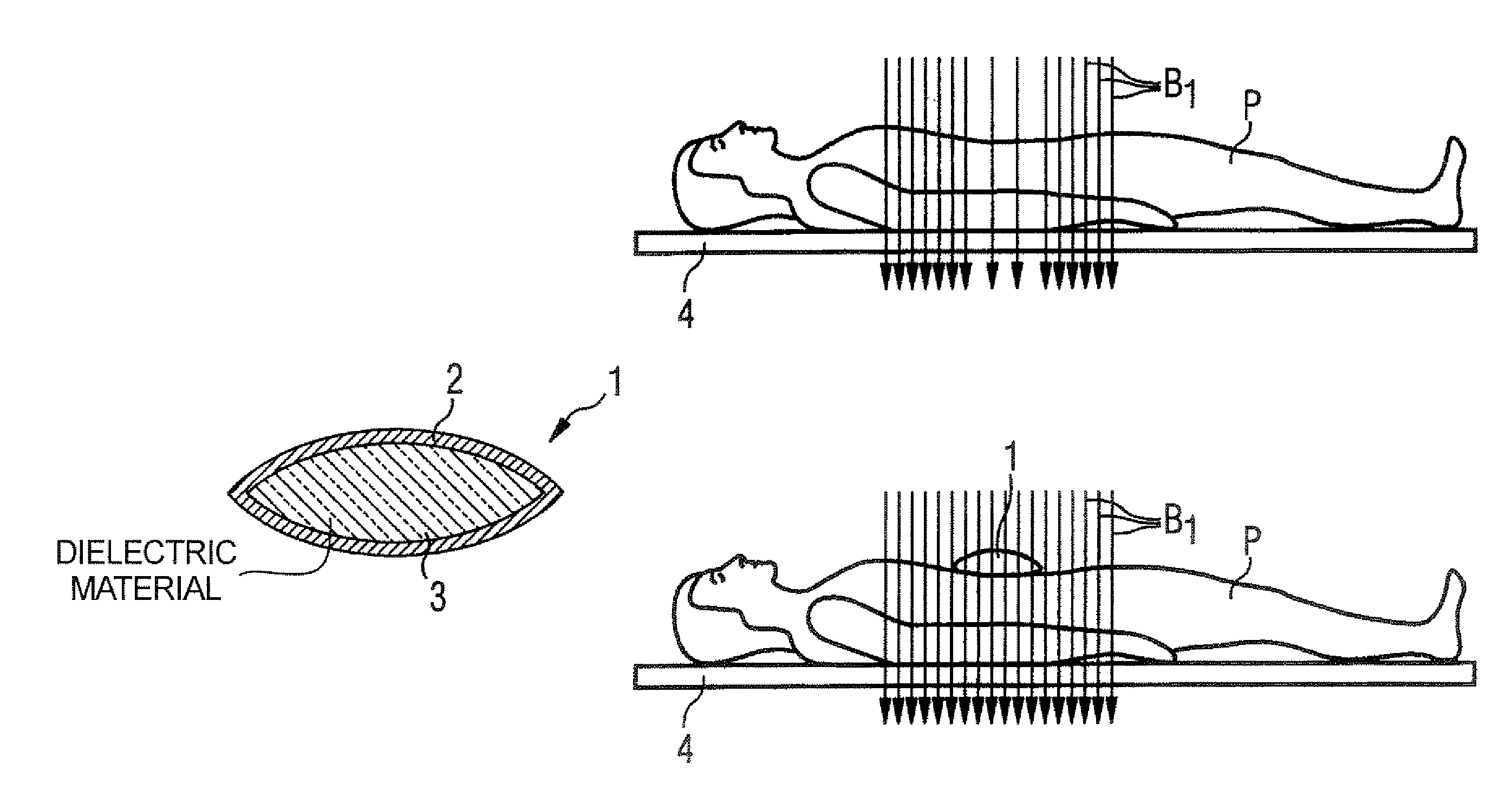Method, dielectric element, and MR system for generating an MR exposure
a dielectric element and exposure technology, applied in the field of dielectric element and mr system for generating an mr exposure, can solve problems such as interference effects, and achieve the effect of reducing or even completely preventing interference in magnetic resonance exposures
- Summary
- Abstract
- Description
- Claims
- Application Information
AI Technical Summary
Benefits of technology
Problems solved by technology
Method used
Image
Examples
Embodiment Construction
[0035]The dielectric element shown in FIG. 1 is a dielectric pillow 1, formed of an outer jacket made of plastic film 2 and a filler of dielectric material 3. The plastic film 2 is a bio-compatible material that is relatively thin but nevertheless is sufficiently stable to prevent leakage of the dielectric material 3 contained therein. The plastic film 2 preferably is fused all around the periphery of the dielectric pillow 1.
[0036]In addition, the dielectric pillow 1 in use can be covered with a washable pillowcase which can be changed before usage of the dielectric pillow 1 on another patient. The plastic jacket 2 can be disinfected with typical means.
[0037]The filling of the dielectric pillow 1, i.e. the dielectric material 3 of which the dielectric element 1 is essentially formed, exhibits only magnetic resonance lines that are shifted by a specific degree relative to the magnetic resonance line of water protons given a given magnetic field.
[0038]The concrete exemplary embodiment...
PUM
 Login to View More
Login to View More Abstract
Description
Claims
Application Information
 Login to View More
Login to View More - R&D
- Intellectual Property
- Life Sciences
- Materials
- Tech Scout
- Unparalleled Data Quality
- Higher Quality Content
- 60% Fewer Hallucinations
Browse by: Latest US Patents, China's latest patents, Technical Efficacy Thesaurus, Application Domain, Technology Topic, Popular Technical Reports.
© 2025 PatSnap. All rights reserved.Legal|Privacy policy|Modern Slavery Act Transparency Statement|Sitemap|About US| Contact US: help@patsnap.com



